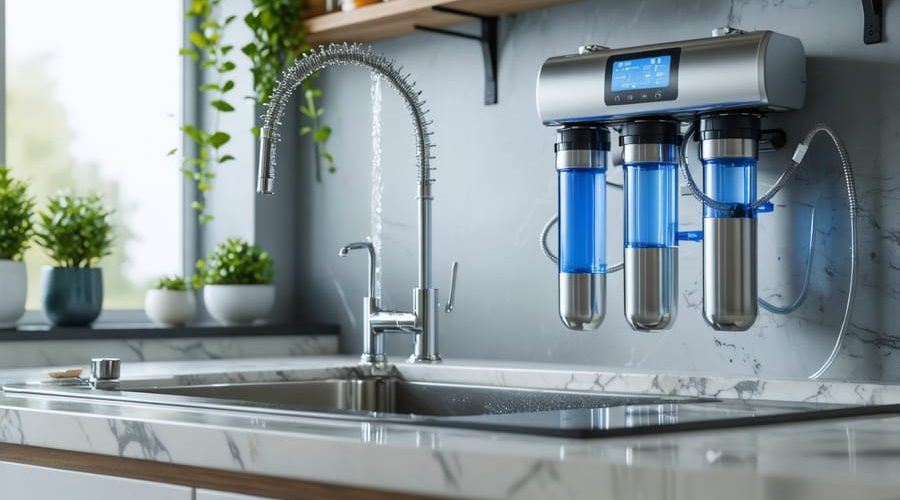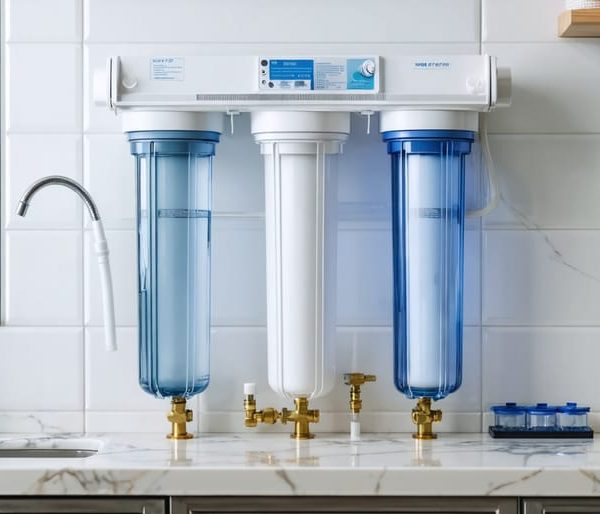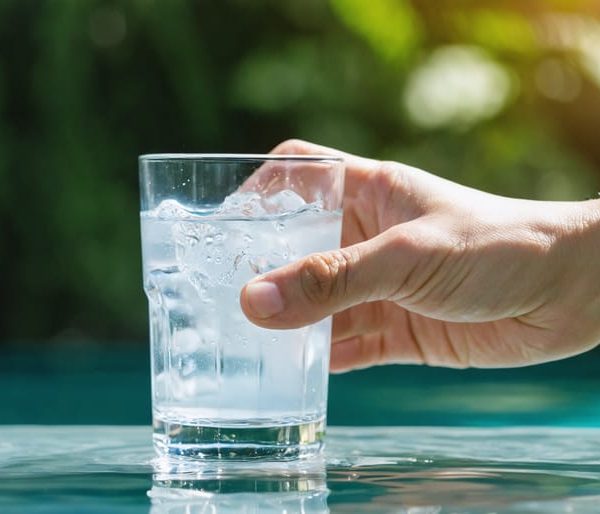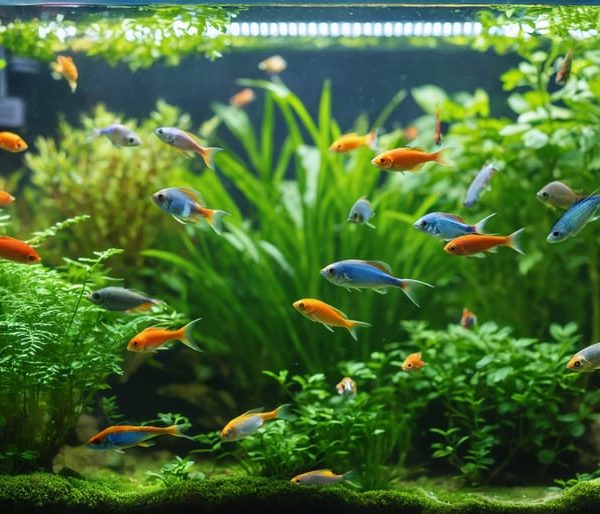Clean, safe drinking water stands at the foundation of a healthy home, yet municipal water systems often fall short of optimal standards. Transform ordinary tap water into crystal-clear, purified drinking water through proven filtration methods that protect your family’s health while maintaining environmental responsibility.
Installing a reverse osmosis system removes up to 99% of contaminants, including heavy metals, chlorine, and microscopic particles. For a simpler approach, activated carbon filters effectively eliminate common pollutants and improve taste, while UV purification systems neutralize harmful bacteria and viruses without chemicals. These modern purification solutions offer peace of mind while reducing reliance on bottled water.
Beyond technology, understanding your local water quality through professional testing empowers informed decisions about purification needs. Whether dealing with hard water, chlorine taste, or specific contaminants, today’s home water purification options provide targeted solutions for every household’s unique challenges. The journey to pure, great-tasting water starts with choosing the right purification method for your home.
This guide explores proven water purification techniques, helping you navigate the options to create a sustainable, healthy water supply that’s both cost-effective and environmentally conscious.
Understanding Your Water Quality
Common Water Contaminants
Water quality can vary significantly between different water sources, but certain contaminants commonly appear in household water supplies. Sediments and particles, including rust, sand, and organic matter, are among the most visible pollutants. Chlorine, while used for disinfection in municipal systems, can affect taste and odor. Heavy metals such as lead, copper, and mercury may leach from old plumbing systems, posing serious health risks.
Biological contaminants include bacteria, viruses, and parasites that can cause waterborne illnesses. Agricultural runoff often introduces nitrates and pesticides into water supplies, while industrial processes can contribute chemicals and volatile organic compounds (VOCs). Hard water minerals like calcium and magnesium, though not harmful to health, can cause scale buildup on appliances and affect cleaning efficiency.
Emerging contaminants of concern include pharmaceutical residues, microplastics, and PFAS (per- and polyfluoroalkyl substances), which are increasingly detected in water supplies across the country. Understanding these common pollutants is crucial for selecting the most effective water purification method for your home.
Testing Your Water
Before investing in a water purification system, it’s essential to understand your water quality. Start by obtaining a home water testing kit from a local hardware store or online retailer. These kits typically test for common contaminants like chlorine, lead, pesticides, bacteria, and pH levels.
To test your water, collect a sample from your tap first thing in the morning before any water has been run. Follow the kit’s instructions carefully, usually involving dipping test strips into the water sample or adding chemical reagents. Wait for the indicated time, then compare the results to the provided color chart.
For more comprehensive results, consider sending a water sample to a certified laboratory. Many local health departments offer water testing services, and some utility companies provide free basic testing for their customers.
Keep a log of your test results and retest periodically, especially if you notice changes in taste, odor, or appearance. This information will help you choose the most effective purification method for your specific water quality issues and monitor the performance of your chosen system over time.
Effective Home Purification Methods
Filtration Systems
Water filtration systems offer various solutions for improving your home’s water quality, each designed to target specific contaminants. The most common type is the activated carbon filter, which excels at removing chlorine, sediment, and organic compounds that affect taste and odor. These filters are available as countertop units, under-sink installations, or whole-house systems.
Reverse osmosis (RO) systems provide more comprehensive purification by forcing water through a semi-permeable membrane. This process effectively removes up to 99% of dissolved solids, including heavy metals, fluoride, and minerals. While highly effective, RO systems do require more maintenance and produce some wastewater during the filtration process.
Ceramic filters are another reliable option, particularly effective at removing bacteria and parasites. These durable filters contain tiny pores that physically block contaminants while allowing clean water to pass through. They’re often combined with carbon elements for enhanced filtration capabilities.
UV filtration systems use ultraviolet light to neutralize harmful microorganisms, making them an excellent choice for well water users concerned about bacterial contamination. These systems are chemical-free but work best when paired with other filtration methods to address non-biological contaminants.
Ion exchange filters are specifically designed to tackle hard water issues by replacing calcium and magnesium ions with sodium ions. This process not only improves water quality but also protects your appliances from scale buildup.
When choosing a filtration system, consider your specific water quality concerns, maintenance requirements, and budget. Multi-stage filtration systems combining different technologies often provide the most comprehensive solution for home water purification.
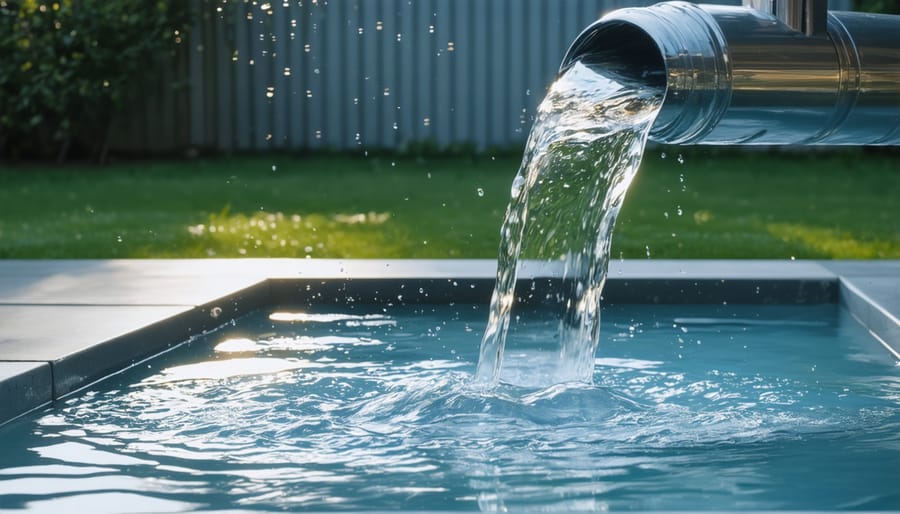
UV Purification
UV purification harnesses the power of ultraviolet light to effectively eliminate harmful microorganisms from your water supply. This chemical-free method uses specialized UV lamps that emit short-wavelength ultraviolet light, which disrupts the DNA of bacteria, viruses, and other pathogens, rendering them unable to reproduce or cause illness.
The process is remarkably simple: water flows through a chamber containing the UV lamp, where it’s exposed to the germicidal light. This exposure typically lasts just seconds, yet it’s powerful enough to destroy up to 99.99% of harmful microorganisms. UV purification is particularly effective against common waterborne threats like E. coli, Cryptosporidium, and Giardia.
UV systems are ideal for homes with water that’s already relatively clear but may have biological contamination concerns. They work best when paired with pre-filtration systems that remove sediment and other particles, as these can shield microorganisms from the UV light. While UV treatment doesn’t remove chemical contaminants or improve taste, it provides an excellent final barrier of protection in your water purification system.
Installation typically occurs at the point of entry or point of use, depending on your needs. The main maintenance requirement is replacing the UV lamp annually and keeping the quartz sleeve clean. For optimal performance, ensure your system includes a UV intensity monitor to alert you when the lamp’s effectiveness diminishes.
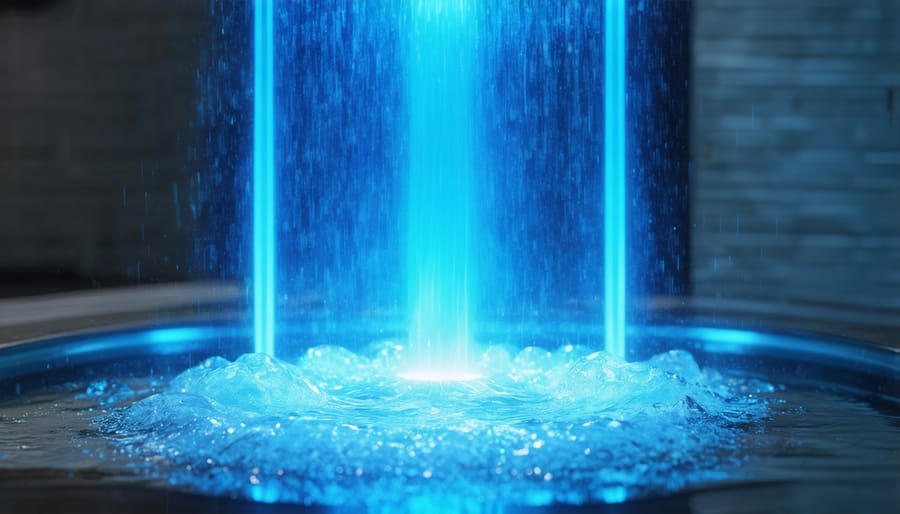
Reverse Osmosis
Reverse osmosis stands out as one of the most effective methods for achieving pure drinking water at home. This advanced filtration process uses a semi-permeable membrane to remove up to 99% of dissolved contaminants, including heavy metals, chlorine, and harmful microorganisms. Understanding how reverse osmosis works can help you make an informed decision about implementing this system in your home.
The process involves pushing water through multiple filtration stages, with the main component being the RO membrane that filters out particles as small as 0.001 microns. This results in significantly cleaner water than what traditional carbon filters can achieve. The system typically includes pre-filters to remove larger particles, the RO membrane, and post-filters for final polishing.
While the initial investment may be higher than other filtration methods, reverse osmosis systems offer long-term value through their thoroughness and reliability. They require minimal maintenance, usually just annual filter replacements and occasional membrane cleaning. Many modern RO systems are also designed with water efficiency in mind, featuring smart technology that reduces waste water production.
One notable advantage is the improvement in taste and clarity of your drinking water, as the system removes substances that can affect both. However, it’s worth noting that RO filtration also removes beneficial minerals, so some users opt for systems with mineral re-addition features.
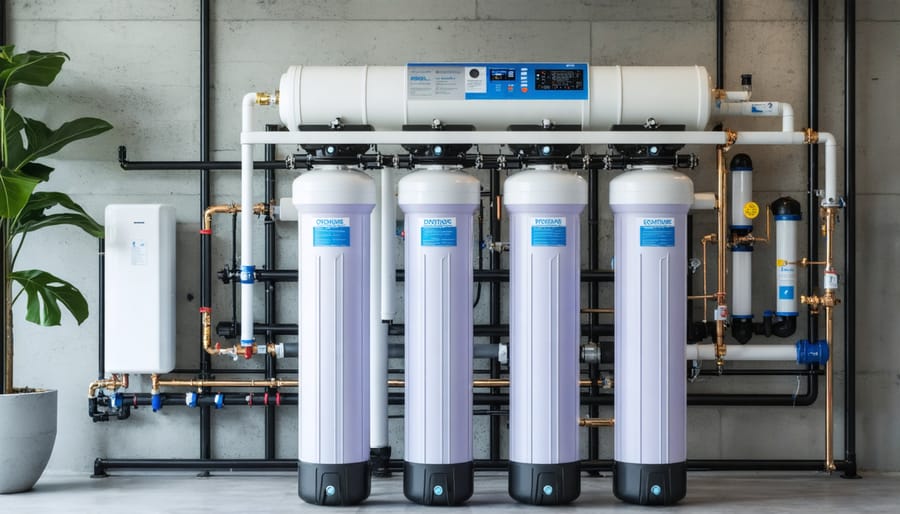
Natural Purification Methods
Natural water purification methods offer environmentally friendly alternatives that harness the power of nature to clean your drinking water. One of the most effective methods is solar distillation, which uses sunlight to evaporate water and collect the purified condensation. This process effectively removes contaminants and minerals while requiring no electricity.
Biological filtration through plants is another eco-conscious option. Water hyacinths, bulrushes, and other aquatic plants naturally filter water by absorbing pollutants through their root systems. You can create a small bio-filter system using these plants in a controlled environment.
Activated charcoal, derived from sustainable sources like coconut shells, effectively removes chlorine, volatile organic compounds, and unpleasant odors. Simply placing charcoal sticks in your water pitcher or installing a charcoal-based filter can significantly improve water quality.
Clay pot filtration, an ancient technique still relevant today, uses natural ceramic materials to filter water. These porous containers trap contaminants while allowing clean water to seep through gradually. This method requires no electricity and can be maintained with minimal effort.
These natural methods not only purify your water but also reduce your environmental impact by eliminating the need for plastic filters and chemical treatments.
Maintaining Your Water Purification System
Regular Maintenance Schedule
To ensure your home water purification system operates at peak efficiency, following a regular maintenance schedule is crucial. Refer to our comprehensive filter maintenance guidelines for detailed instructions on specific components.
For basic filtration systems:
– Replace sediment pre-filters every 3-6 months
– Change carbon filters every 6-12 months
– Clean filter housing quarterly
– Check and tighten connections monthly
For reverse osmosis systems:
– Replace membrane every 2-3 years
– Change pre-filters every 6-12 months
– Sanitize storage tank annually
– Check pressure levels quarterly
UV purification systems require:
– Annual lamp replacement
– Quarterly sleeve cleaning
– Monthly effectiveness testing
– Bi-annual system sanitization
Additional maintenance tasks:
– Test water quality monthly
– Inspect for leaks weekly
– Clean external surfaces bi-weekly
– Document all maintenance activities
Set calendar reminders for these tasks and keep a maintenance log. This helps track system performance and ensures timely replacements. Remember that maintenance frequency may vary based on water quality, usage patterns, and manufacturer recommendations. Always keep spare filters on hand to avoid interruptions in your water purification system’s performance.
Troubleshooting Common Issues
Even the best water purification systems can encounter issues, but most problems have straightforward solutions. If you notice reduced water flow, first check and clean any clogged pre-filters, which often accumulate sediment over time. For reverse osmosis systems, low pressure might indicate it’s time to replace the membrane or that your feed water pressure is insufficient.
Strange tastes or odors usually signal that it’s time to replace your carbon filters. If you detect a chlorine smell, your activated carbon filter may be saturated. For metallic tastes, check your water’s pH levels and ensure your system is suited for your specific water conditions.
Leaks around fittings often result from loose connections or worn-out O-rings. Tighten connections carefully, but avoid over-tightening which can damage components. Replace any cracked or degraded seals immediately to prevent water damage.
If your UV system’s indicator light is blinking, the bulb may need replacement, typically required annually. For water softeners, check salt levels regularly and clean the brine tank if you notice reduced effectiveness.
White cloudy water from your tap is usually just trapped air and will clear up after standing. However, if cloudiness persists, your system might have trapped air pockets that need releasing through the air release valve.
Remember to maintain regular service schedules and keep a log of filter changes to prevent many common issues before they occur.
Ensuring clean, safe drinking water at home is not just a luxury but a fundamental necessity for our health and well-being. Throughout this guide, we’ve explored various effective methods to purify your home water supply, from simple filtration systems to more advanced treatment options. Each approach offers unique benefits, and the right choice depends on your specific needs, water quality concerns, and household requirements.
Remember that water purification is a multi-layered process that may combine different methods for optimal results. Whether you choose activated carbon filters for removing chlorine and organic compounds, reverse osmosis for comprehensive filtration, or UV treatment for eliminating harmful microorganisms, the key is consistent implementation and proper maintenance of your chosen system.
The environmental impact of our water consumption choices cannot be overlooked. By implementing sustainable water purification methods at home, we not only protect our health but also contribute to reducing plastic waste from bottled water and conserving our precious water resources.
Regular testing of your water quality, maintaining your purification systems, and staying informed about local water issues are essential practices for ensuring long-term success. Consider starting with a basic filtration system and gradually upgrading based on your water quality needs and test results.
As we become more aware of emerging water quality challenges, taking control of our home water purification becomes increasingly important. The investment in proper water purification methods pays dividends in both health benefits and environmental protection.
Take action today by implementing at least one of the purification methods we’ve discussed. Start small if needed, but start somewhere. Clean water is not just about better taste or smell – it’s about creating a healthier home environment for you and your family while contributing to a more sustainable future.
Remember, the journey to pure, clean water at home is ongoing, but with the right knowledge and tools, it’s entirely achievable. Your efforts in water purification today will contribute to a healthier tomorrow for both your household and our planet.
